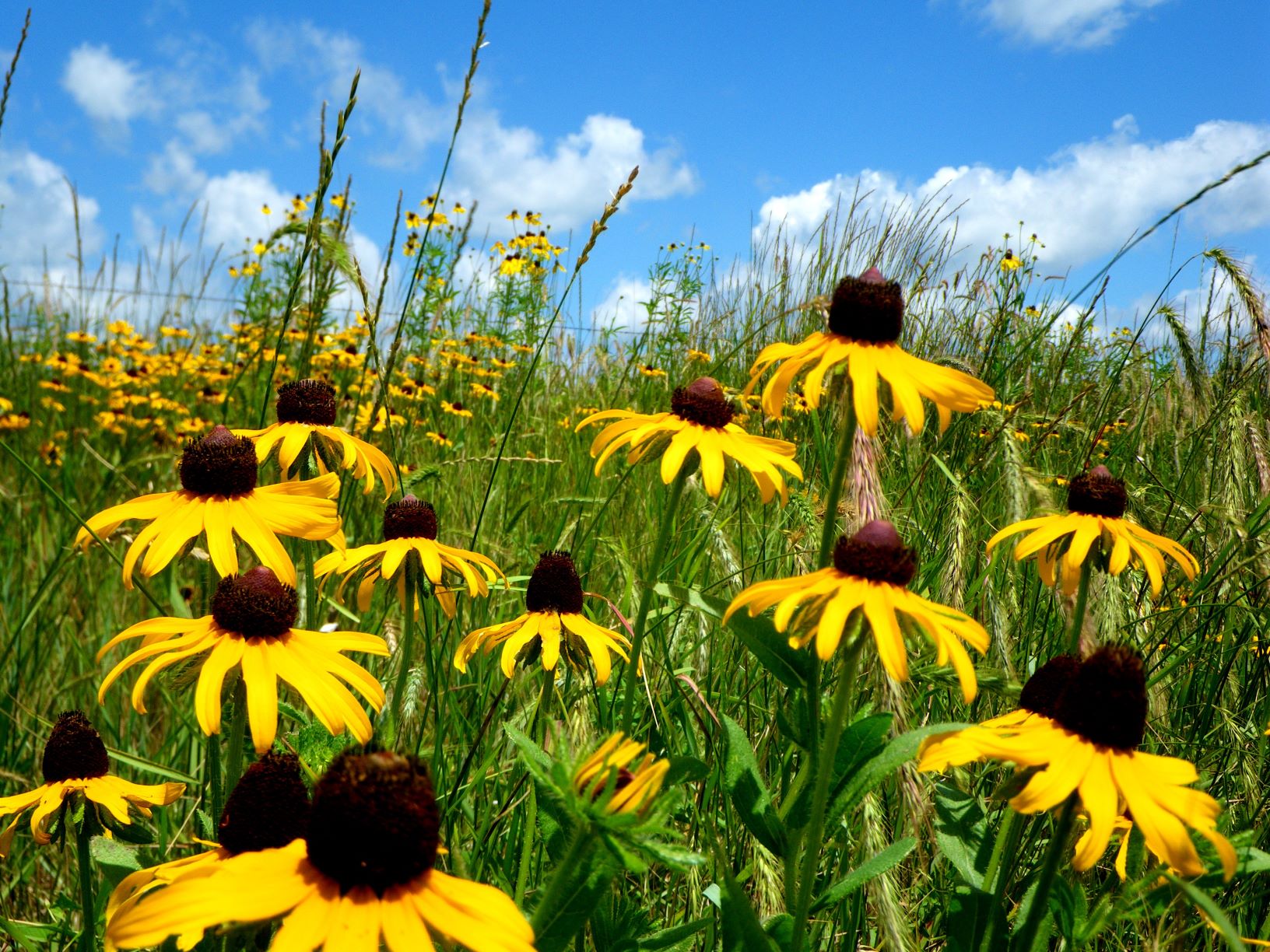A Habitat at Work- Pollinators Welcome

The landscape of the Tennessee River Valley is pure Appalachia, beginning in the ancient mountains of the east to the fertile bottomlands of the west. Once a thriving ecosystem for pollinators, the lands have been re-shaped by economic growth leading to the loss of thousands of acres of habitat. Where grasslands, prairies, and savannas originally dominated the landscape, businesses, homes and row farms have replaced the native habitats and plant species, leading to smaller pollinator populations of birds, bats, butterflies, moths, flies, beetles, wasps, small mammals, and honey bees.
What’s the Buzz?
This loss of habitat has both an economic and ecosystem impact. According to the Pollinator Partnership’s website, “Somewhere between 75% and 95% of all flowering plants on the earth need help with pollination. They (sic) need pollinators. Pollinators provide pollination services to over 180,000 different plant species and more than 1200 crops. That means that 1 out of every three bites of food you eat is there because of pollinators. If we want to talk dollars and cents, pollinators add 217 billion dollars to the global economy and honey bees alone are responsible for between 1.2 and 5.4 billion dollars in agricultural productivity in the United States. In addition to the food that we eat, pollinators support healthy ecosystems that clean the air, stabilize soils, protect from severe weather, and support other wildlife.” The Tennessee River Valley’s economy depends on agriculture production and secondary market activities of processing and distribution.
Increasing the Buzz…..and we don’t mean the Corona Effect
To combat the loss habitat, disparate partners can be found working together to restore native habitats. One such project is the work of the Tennessee Valley Authority (TVA) in restoring grasslands in their power line easements. During the 1930’s TVA brought electrification to rural communities by building out miles and miles of transmission lines. The building of these transmission corridors resulted in the removal of the dense forest stands that then converted back to native grasslands. The restoration impact was measurable, bringing about TVA’s interest in transforming their right of ways from pesticide spraying to working native habitats. In 2019, TVA partnered with Austin Peay and the Southeast Grass Initiative to restore a transmission corridor near Clarksville, TN. Students assisted with planting native grasses on a cold January day with a goal to create a seed bank of native grasses that can then be shared with other similar projects.
Another important partnership in combating the loss of pollinators is the bee keepers such as Diane Ravens, owner of the Appalachian Bee Farm in Ocoee, TN. Bee keepers are bee cultivators helping to increase the health and population of honey bees. They often assume roles as educators, protectors, and advocate for bees. In the Tennessee River Valley, agriculture is still one of the top economic industries and bees are essential to crop production. Diane, a self-described reluctant bee farmer offers services that extend beyond making honey or keeping her hives buzzing. She provides pollinator services to local farmers growing food crops in the region. So when you enjoy that first crisp apple in the fall, you need to thank not only the farmer, but the bees and the bee keepers who all contributed to the apple growing process.
Creating your own Buzz
Many of us are home garden enthusiasts. By taking small easy steps, each of us can help increase habitat for pollinators and improve our own garden yields, be that showy flowers or a luscious heirloom tomatoes. Begin by planting a few native species in your own garden. In the Tennessee River Valley, black eyed Susan, lilacs, bee balm, coneflowers, asters, hostas, zinnias, and sedum will seduce bees to visit your garden. Think seasonally, for a display of flowers that will attract bees beginning in the spring throughout the fall.
Avoid the use of gardening chemicals in your pollinator garden. When you plant native species, the plants will root and create a natural weed barrier. Your garden will flourish without your constant attention. Best of all, the plants will bloom year after year. Add a few herbs such as thyme or chives, for an even more pollinator activity. Your herbs can then be harvested and safely used without fear of pesticide contamination.
Share your harvest and knowledge with your neighbors. Make that “good neighbor fence” an herbaceous row of plants that will attract pollinators and provide a colorful display sure to be appreciated by the entire neighborhood.

Recent Comments